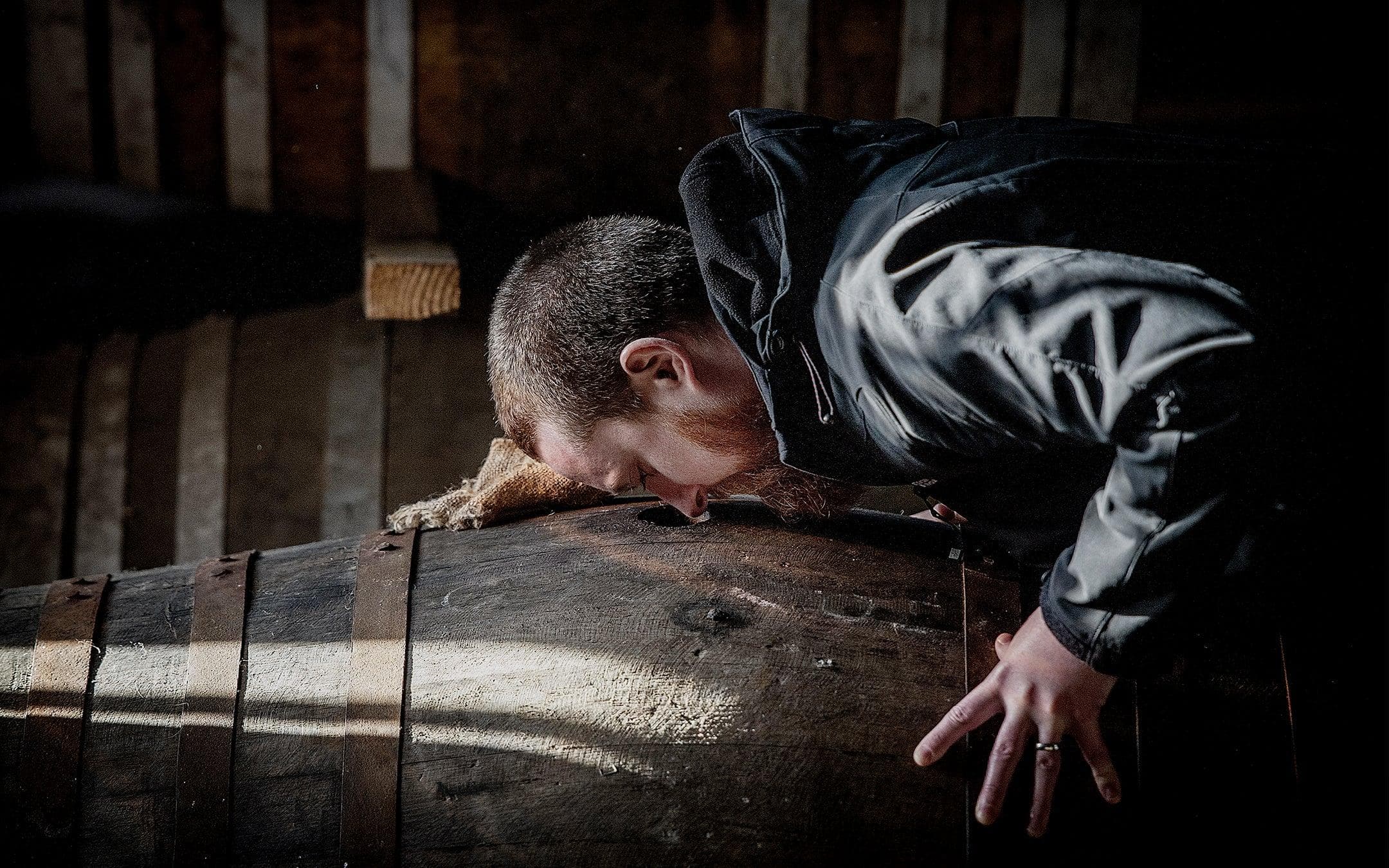While each step of the whisky making process contributes to the overall flavour of a whisky, the maturation process is one of incredible importance. If we were to over simplify the maturation process, it would be as simple as saying you put some new make spirit into an oak cask and toss it in a cold damp warehouse for a few years and voila, whisky! While it seems quite simple, the process of maturation is far more composed. First, let’s look into what maturation really is.
When a cask is filled with new make spirit off of the still and sent to rest, the liquid then begins its journey of becoming whisky by extracting the natural substances of the wood. In warmer climates, and the months of Summer and Spring, the liquid inside pushes its self into the pores of the oak as the cask expands. In the colder months of Fall and Winter, the liquid contracts, pulling the delicious compounds from the wood back into the spirit. This is what we know as “breathing” and the process that happens over many years to give us whisky!
Now let’s look a little deeper into 3 different areas that will affect the spirit once it is inside the cask.
Time:
What is the right amount of time a whisky should mature for? While local laws differ, we know that to be legally considered Scotch Whisky, it must age in an oak cask for at least 3 years. The years after are determined by a number of factors such as cask type, climate and the overall goal of the distiller or blender. Different types of wood will determine the amount of time a whisky will age for. Fresh virgin oak for instance is quite aggressive, and flavour imparts very quickly, oftentimes resulting in a one-dimensional whisky. Used casks, like bourbon, sherry, port and others, are known for offering the spirit a calmer and more gradual maturation, which is why we see many whiskies of all ages from these types of casks.
Environment:
Another key factor in maturation is the environment in which that cask will rest. In Scotland we see three types of warehouses used: dunnage, racked and palletized. Dunnage warehouses are those picturesque stone buildings you image every whisky resting in. The earth floors and stone walls act as a natural resting place, where humidity and temperature are, you guessed it, regulated by nature. The reason these casks can age for longer amounts of time is due to the fact that Scotland doesn’t have massive weather swings, so the temperature and humidity inside stays relatively consistent. For palletized and racked warehouses, the temperature and humidity inside will vary due to their size and construction. They are typically built with thinner walls and insulated or concrete floors, allowing the outside climate to have a bigger effect on the casks.
In short, each of these warehouses offer something different. Dunnage tends to offer a more humid environment, offering a slower maturation, where more racked and palletized warehouses can offer a less humid environment, resulting in a faster maturation process. This is one reason why we see an angel’s share of about 1-2 % in Scotland, and about 4-10% per year in places like Kentucky.
Cask Size:
With many different types of casks, all coming in different sizes, this offers a playground of flavour variance for blenders and distillers. The surface-area-to-volume ratio is another key factor in determining how fast the spirit will age, as the lower the surface-area-to-volume ratio is, the longer that spirit will take to reach full maturation. Let’s focus on three cask types for reference.
- Butts: I like big butts and I cannot… Ok, let's focus here! Butts are some of the largest casks we see, coming in at about 500 liters. Typically sherry, port or other fortified wines, they offer a low surface-area-to-volume ratio, resulting in longer times to reach maturation. This is why we often see whiskies over 25 years in these types of casks. A fantastic example of a long rest in these types of cask is Cask 12.43 Desire Lines, a 28 year Speyside in a second fill -Sherry butt.
- Hogsheads: No, not the pub in Diagon Alley, but one of the most common cask types for aging Scotch whisky, and personal favourite. “Hoggies” as they are often called, come in between 225 - 250 liters and are essentially a bourbon barrel that has been broken down and reassembled at a slightly bigger size. They may have previously held other spirits as well, with sherry being the most common outside of bourbon. These offer a higher surface -area-to-volume ratio than a butt, and can impart the same achieved notes as a butt, at a much fast pace. Speaking of personal favourites, Cask 66.274 A Vintage Dinner Suit is at the top with incredibly sophisticated notes of savory meats and smoke!
- Barrels: A standard American Bourbon Barrel comes in about 200 liters and offers a good middle ground of surface-area-to-volume ratio. This affords for faster maturation and those classic sweet vanilla notes! A second fill barrel, like Cask 58.40 Zingalingling, offers rich notes of vanilla cream soda from its 12 years resting inside the casks. I dare say it’s a barrel of fun to sip and enjoy!
While the maturation process seems quite simple, there are many factors that come into play to compose the final spirit we have come to know and love. While I have only touched on a few here, I hope this breaks down a better understanding of some of those factors and brings you even more appreciation for this incredible spirit.
Sláinte!
Jenna Elie



